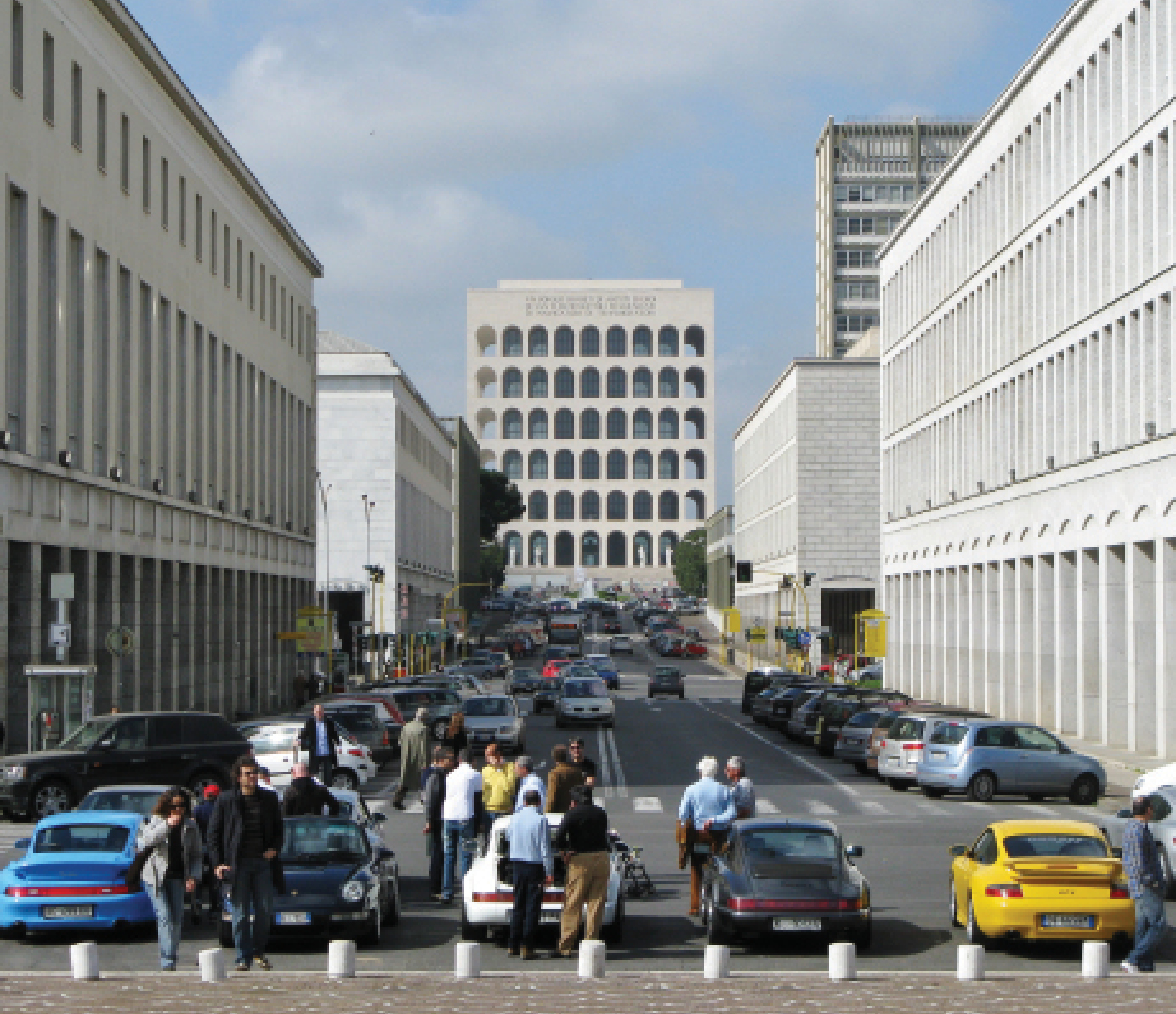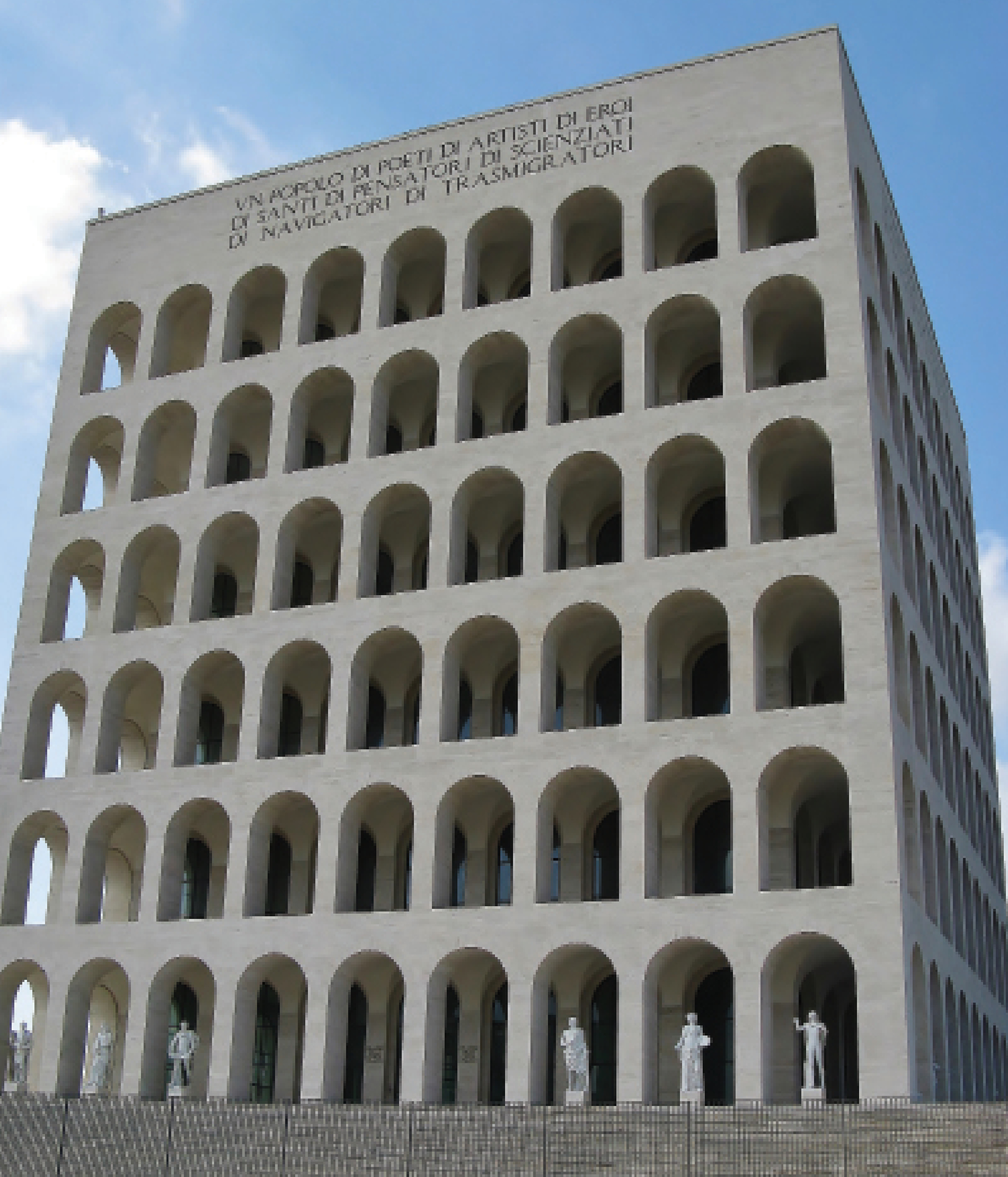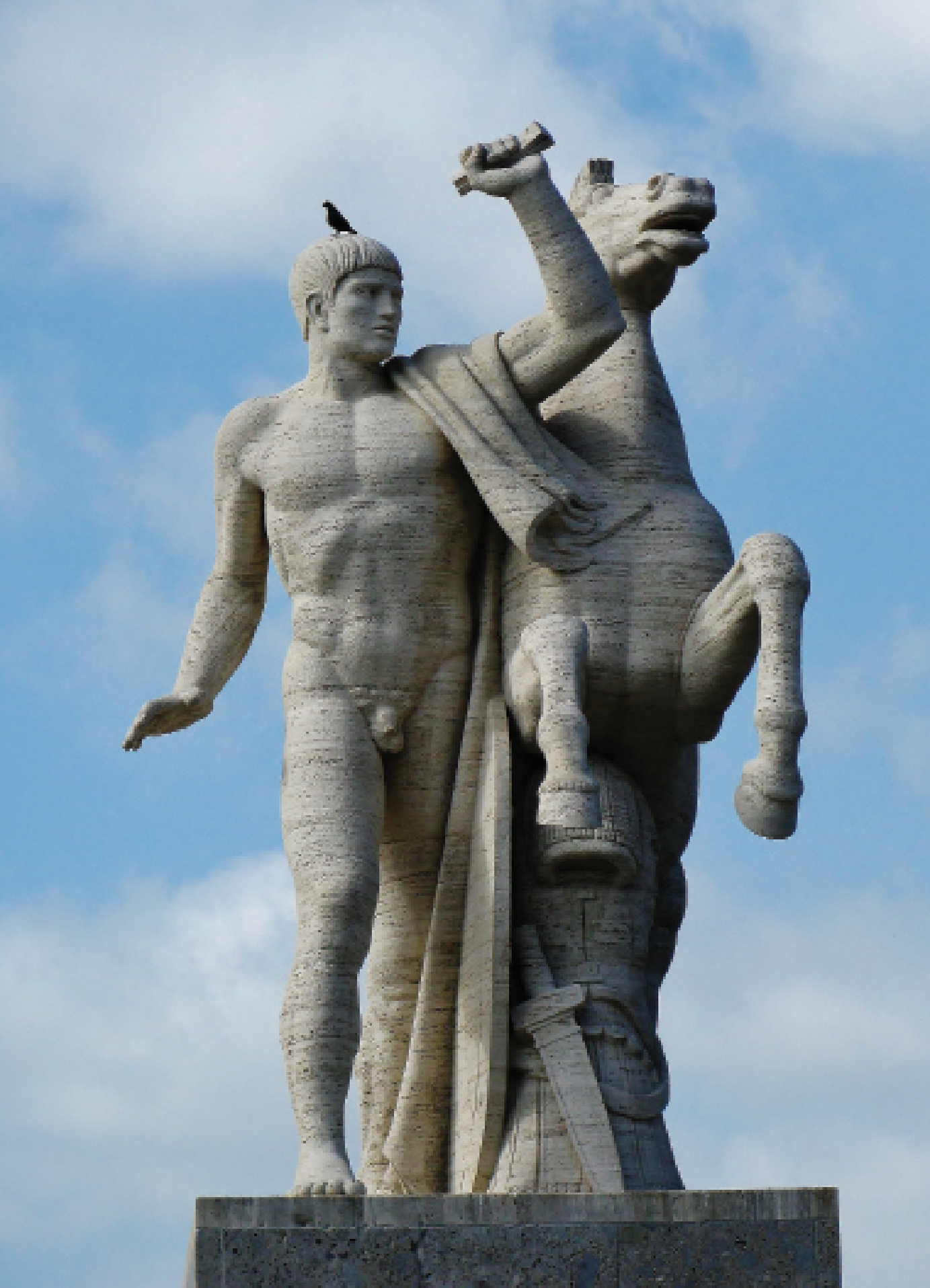Called the “Square Coliseum”, the Palazzo della Civiltà Italiana was intended by Benito Mussolini as the centrepiece of the 1942 Esposizione Universale Roma
When I first saw it, in the distance at the far end of a wide avenue, it seemed like a mirage: a bright white cube, made of rows and columns of arches. Within each arch was a dark shadow slanting inward, to a mysterious, invisible inner core. Compared with the massive bulk of the architecture surrounding me at my end of the street, it seemed as if the wind might enter the structure through the archways, lift it, and send it spinning away, like Dorothy’s house in The Wizard of Oz.
It’s called the “Square Coliseum”, but it’s officially the Palazzo della Civiltà Italiana. It was intended by Benito Mussolini as the centrepiece of his Esposizione Universale Roma, or EUR, the World’s Fair in Rome he planned for 1942, to celebrate 20 years of Fascist rule in Italy. The fair never happened, of course. Italy’s disastrous decision to enter the war allied with Nazi Germany eventually put an end to all celebrations for the Fascisti.
Closer, the illusion of lightness and fragility disappears. It is an enormous building, the largest in the EUR. Made of travertine marble, it is approached by monumental flights of stairs. Four huge sculptural groups stand on the corners of the plinth. The lower arches contain statues representing trades and occupations. There is an inscription in giant lettering across the top of the façade: UN POPOLO DI POETI DI ARTISTI DI EROI DI SANTI DI PENSATORI DI SCIENZIATI DI NAVIGATORI DI TRASMIGRATORI: “A nation of poets, artists, heroes, saints, thinkers, scientists, navigators, and travellers”.
The inscription, if referring to historical Italy, is stirringly apt. As an expression of Il Duce’s vision of the glorious Italian future under Fascism, it is a sad remnant of the hubris that led to a nation’s tragedy.
The architecture of EUR was to be a modern reinvention of the glories of Imperial Rome. The arches of the Palazzo della Civiltà Italiana were to evoke the Coliseum. Like Trajan’s column, the Exhibition Offices bear heroic reliefs. The Palazzo dei Congressi’s low dome suggests the Pantheon. The Palazzo dell’INPS (Social Security Office), has a semi-circular façade that suggests Trajan’s Market. And so on.
 Post-war EUR was a bleak collection of ghostly buildings, abandoned except by squatters. Film makers like Fellini, Rossellini, and Antonioni used them as images of emptiness and alienation. As Italy’s economy began to recover in the 1950s, though, EUR gradually became a modern business and residential district. The Palazzo dello Sport was constructed as a venue for the 1960 Olympic Games.
Post-war EUR was a bleak collection of ghostly buildings, abandoned except by squatters. Film makers like Fellini, Rossellini, and Antonioni used them as images of emptiness and alienation. As Italy’s economy began to recover in the 1950s, though, EUR gradually became a modern business and residential district. The Palazzo dello Sport was constructed as a venue for the 1960 Olympic Games.
But the “Square Coliseum” remained empty for 72 years, fenced to ward off intruders. However, in 2015, Fendi, the famous Roman fashion house, renovated the long-abandoned monument to house their headquarters, with a 15-year lease at €2.8 million per year. The public can visit exhibition spaces and a café located on the ground floor.
How will it seem when I return? I remember the play of light and shadow gave the deserted building a rather sinister beauty. Will it be less sinister – will it be less beautiful – when the darkness behind the arches is filled, not with lost dreams of Empire, but by jewellery, furs, and expensive handbags?


